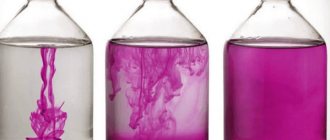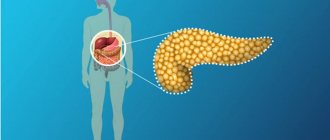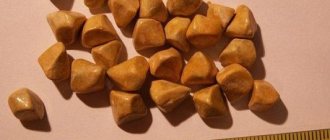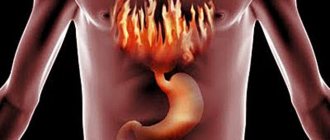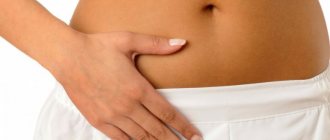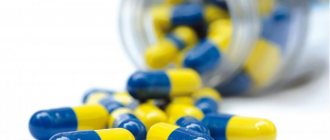Duodenitis is an inflammation of the duodenum, most often only the mucous membrane, accompanied by a long-term process of changing its structure, a common disease that is more common in men.
If only the mucous membrane of the duodenal bulb is affected, the disease is called bulbitis, the area of the large duodenal papilla (papilla of Vater) is called sphincteritis or odditis. The disease is often combined with inflammation of the gastric mucosa (gastroduodenitis).
As for the symptoms, its expression depends on the form of duodenitis, as well as the disorder that caused the occurrence of such an illness. The main, and often one of the first signs, is severe pain.
What it is?
Duodenitis is an inflammatory disease of the mucous membrane of the wall of the duodenum (duodenum).
There are acute and chronic forms. Acute duodenitis is characterized by severe symptoms of acute inflammation, which completely subside after therapy and do not leave noticeable structural changes in the mucosa. Chronic duodenitis is a long-term relapsing disease characterized by the development of foci of inflammation in the mucosa followed by pathological restructuring of its structure.
This is the most common of duodenal diseases. 94% of all inflammatory processes in the duodenum become chronic. Chronic duodenitis occurs more than twice as often in men than in women.
Causes of duodenitis
Depending on the origin, duodenitis is divided into:
- primary (an isolated process not associated with other ailments, occurs in less than a third of patients);
- secondary (develops as a result of other diseases).
Primary duodenitis can be caused by:
- poor nutrition;
- side effects of a number of medications (glucocorticosteroids, aspirin, non-steroidal anti-inflammatory drugs);
- alcoholic drinks;
- parasites;
- smoking;
- bacterial infections;
- viruses;
- allergies (usually food);
- immune breakdowns;
- burdened by heredity;
- stress.
Secondary duodenitis is formed against the background of:
- gastritis (islands of mucous appear in the duodenal bulb, whose structure is similar to the gastric one, they are called gastric metaplasia, they are colonized by harmful microorganisms Helicobacter pylori, which, in turn, provoke inflammation and/or erosion, and also contribute to subsequent relapses);
- peptic ulcer with localization of defects in the duodenum;
- liver pathologies;
- pancreatitis;
- diseases of the biliary tract;
- intestinal diseases;
- immunodeficiencies;
- cardiovascular diseases (the mucous membrane is damaged due to circulatory disorders);
- renal failure.
Classification
In their daily work, various specialists (clinicians, endoscopists, pathologists) use different classifications of duodenitis. However, everyone stands out:
- acute form - characterized by a sudden and striking manifestation of symptoms, which, if detected in the early stages, can be eliminated within a few days, often thanks to diet therapy. Acute duodenitis can be caused by bad habits and poor diet;
- chronic form – is a consequence of untimely treatment of the previous form, and is also formed due to the chronic course of diseases associated with other organs of the gastrointestinal tract. The basis of therapy is the use of medications, and during the period of remission, adherence to a gentle menu.
According to the endoscopic picture, inflammation of the duodenum is divided into:
- atrophic duodenitis - in which thinning or death of the cells of the mucous membrane of the affected organ occurs, which causes a disruption in the secretion of digestive juices;
- hemorrhagic – characterized by the detection of duodenal bleeding during diagnosis;
- erythematous - expressed by significant swelling and severe redness of the mucous membrane;
- erosive or hypertrophic duodenitis - accompanied by the appearance of erosions of varying numbers and depths;
- nodular;
- hyperplastic duodenitis - characterized by increased division and proliferation of mucosal tissue. During endoscopic examination, a lumpy surface of the membrane is noted;
- reflux duodenitis - during which the contents of the small intestine flow back into the duodenum.
As the disease process spreads, this disorder is divided into the following types:
- superficial or catarrhal duodenitis - characterized by slight inflammation of the upper layers of this organ;
- proximal duodenitis is the complete opposite of the previous form, since inflammation spreads to the deeper layers of this organ, and the duodenal bulb is also involved in the process;
- distal duodenitis - almost completely similar to the proximal one, the only difference is that the bulb is almost unchanged;
- total or diffuse - with damage to the entire surface of the mucosa;
- focal duodenitis or limited - during diagnosis it is expressed by one or several foci of inflammation in various parts of the duodenal membrane;
- papillitis - this condition is spoken of when the inflammatory process affects the major duodenal papilla.
In addition, there are several specific and most rare types of inflammation of the duodenum. These include:
- tuberculous duodenitis;
- immunodeficient;
- caused by Whipple's or Crohn's disease;
- fungal;
- follicular duodenitis;
- consequence of intestinal amyloidosis.
Reasons for development
The main reasons leading to the development of the inflammatory process in the mucous membrane of the duodenum are:
- abuse of fried, spicy, smoked and sour foods;
- abuse of drinks with a high caffeine content (energy drinks, coffee, strong tea, cola);
- smoking;
- alcoholism.
All of the above factors contribute to increased secretion of hyperacid gastric juice, that is, containing an increased concentration of hydrochloric acid. It enters the cavity of the duodenum, first causing irritation and then acute inflammation of its mucous membrane. When the disease becomes chronic, atrophic and degenerative processes occur in the intestinal wall.
Duodenitis often develops as a secondary process against the background of a number of the following pathologies of the digestive system:
- peptic ulcer of the stomach and duodenum;
- chronic gastritis;
- infection of the stomach and duodenum with the bacterium Helicobacter Pylori;
- disturbance of blood supply and innervation of the walls of the duodenum;
- chronic colitis, enteritis, pancreatitis, hepatitis;
- cirrhosis of the liver;
- helminthic infestations (giardiasis, ascariasis).
Types of duodenitis
In medicine, the disease in question is classified into two areas:
- The nature of the inflammatory process. It can be widespread (most often this is the type of duodenitis that is diagnosed) when the entire duodenum is involved in the pathological process. Local duodenitis is often diagnosed. In this case, inflammation occurs only in a specific part of the duodenum:
- inflammation of the distal section - the area of the transition of the duodenum to the jejunum;
- bulbitis - the process occurs in the duodenal bulb;
- papillitis – pathology is detected in the area where the papilla of Vater is located;
- sphincteritis - the inflammatory process is localized in the area of the sphincter of Oddi.
- Form of the disease. In this case, the doctor will distinguish between an acute or chronic form. In the first case, duodenitis has a short-term course, most often it occurs due to poisoning or against the background of a viral infection. But chronic duodenitis is characterized by a long course, periods of exacerbation are replaced by periods of remission. As chronic duodenitis progresses, the doctor will also note the stages of spread of the inflammatory process:
- superficial duodenitis - the inflammatory process occurs only in the upper layer of the duodenal mucosa, the duration of the disease is a maximum of 3 months;
- atrophic - the mucous membrane becomes thinner, the duodenal glands are involved in the pathological process, the formation and secretion of gastric juice is disrupted;
- erosive, interstitial - ulcers are clearly visible on the duodenal mucosa.
Symptoms of duodenitis in adults
Manifestations of duodenitis depend on the cause of its occurrence and the presence of concomitant pathology. Often the disease is hidden under the guise of other ailments: stomach ulcers, gastritis, cholecystitis.
Symptoms of duodenitis in adults:
- Painful sensations in the epigastric region, aggravated by palpation (palpation) of the abdomen. Pain has its own characteristics in various forms of duodenitis: in the chronic form - constant, aching, worsening on an empty stomach and 1-2 hours after eating;
- with duodenitis caused by intestinal obstruction, the pain is bursting, paroxysmal, and occurs when the intestines are full;
- with gastritis-duodenitis with high acidity - develops 10-20 minutes after eating, which is explained by the entry of acidic gastric contents into the intestines;
- the ulcer-like form caused by Helicobacter pylori is characterized by fasting pain;
- with local inflammation around the nipple of Vater, the outflow of bile from the gallbladder is disrupted, resulting in a clinical picture similar to an attack of hepatic colic: pain in the right hypochondrium.
- nausea;
If the disease is asymptomatic, there may be no complaints; detection of pathology is an accidental finding during gastroduodenoscopy.
What is duodenitis
Duodenitis is an inflammatory process that occurs in the duodenum.
It manifests itself with symptoms: nausea and pain in the upper abdomen. Treatment depends on the form of the disease, acute or chronic. It occurs in children and adults. Men get sick more often than the fairer sex, judging by the reviews.
The reason for this may be that men are more prone to harmful addictions.
The acute form begins suddenly, and the process develops rapidly. The cause may be poisoning and poor quality food. In this case, ulcers and erosions form on the mucous membrane of the organ. Sometimes phlegmon appears.
Acute duodenitis is manifested by the following symptoms: severe abdominal pain and disruption of the digestive process. With timely treatment, the disease resolves in adults within a few days.
On forums you can find statements from people who have had this disease that it often becomes chronic.
Chronic duodenitis can occur against the background of other gastrointestinal diseases (gastritis or pancreatitis, etc.). A violation of the diet can provoke an exacerbation.
The disease is manifested by symptoms such as pain and dyspepsia. Bole can occur in both children and adults. During treatment, it is very important to adhere to a special diet.
The duodenum is located between the small intestine and the stomach. Its length is about 30 cm. It serves to neutralize excess acid produced by the stomach. The duodenum performs a complex chemical reaction to convert acid into alkali so that the intestinal walls are not injured.
Another function of the organ is to regulate the functioning of other digestive organs. If too little bile or insulin is produced or, on the contrary, too much, it reacts and sends a signal to the necessary glands.
This important organ is shaped like a horseshoe. It is located at the level of the twelfth thoracic vertebra. The intestine can occupy a vertical and horizontal position. Its lobe is covered by peritoneum.
- Upper section (has a longitudinal folded structure, being a continuation of the pylorus);
- Descending;
- Horizontal;
- Rising.
Inflammation usually occurs in the upper section.
- Changes in healthy eating. Ingestion of harmful foods. Abuse of spicy, salty, smoked, fried, fatty foods. Coffee also irritates the mucous membranes. As a result, several times more acid is produced, and the resources of the duodenum are worn out.
- Bacteria that enter the digestive organs cause inflammation. These are: staphylococci, Helicobacter pylori, streptococci, clostridia.
- Inflammatory diseases of other digestive organs (pancreatitis, gastritis, colitis, cirrhosis, etc.) can spread to the duodenum. In addition, diseases of other organs interfere with the proper production of bile, etc. This causes disruption of the duodenum.
- Reflux is the release of intestinal contents into the duodenum. This causes bacteria to multiply in the organ.
- Chemical poisoning. This can happen accidentally when household chemicals, alkalis, etc. enter the body.
- Poor chewing of food. When swallowing whole pieces of food, as well as foreign objects, inflammation of the mucous membrane occurs.
- Malfunction of the intestines (constipation, adhesions, etc.) This leads to slower peristalsis of the duodenum, stretching of the walls of the organ, and worsens the condition of the mucous membrane.
- Chronic gastritis with high acidity can lead to damage to the duodenal mucosa.
- Chronic inflammation of the digestive system (chronic pancreatitis, hepatitis, etc.) can lead to disruption of enzyme production. This thins the walls of the duodenum.
- Poor nutrition.
- Frequent stressful situations.
- Hormonal imbalance.
- Taking a large number of medications.
- Bad habits (smoking, addiction to alcoholic beverages, sedentary lifestyle, etc.).
If the described factors are constantly present, they destroy the integrity of this important organ and cause duodenitis. Then the disease begins to manifest itself with various symptoms.
Signs of duodenitis
By what signs can you identify duodenitis in a person? It often happens that the symptoms of this disease are confused with similar symptoms of diseases of other organs of the digestive system (gastritis, stomach ulcers, biliary colic, etc.).
Therefore, you can make a mistake in prescribing treatment. In adults, the main symptom of this disease is usually pain in the upper abdomen, which is difficult to relieve even with antispasmodic drugs.
The pain may vary depending on the type of disease. For example, with chronic duodenitis, the distinctive symptom is a dull, aching pain. It becomes stronger several hours after eating and on an empty stomach. This means that treatment is urgently required.
If patency is impaired due to duodenitis, pain occurs when the intestines are full. At the same time, it can be sharp or twisting.
The bacteria Helicobacter pylori is often the cause of ulcer-like duodenitis. In this case, pain appears on an empty stomach and at night.
If duodenitis caused gastritis with high acidity, then pain appears a few minutes after eating. The reason for this is food that mixes with gastric juice.
- Symptoms of intoxication (weakness, drowsiness, fatigue);
- High temperature (in acute form of the disease);
- Disruption of the normal digestive process (nausea, lack of appetite, diarrhea, flatulence);
- Bitter belching;
- Vomiting with bile;
- Yellowing of the skin;
- Malfunction of the nervous system.
The last symptom is explained by the fact that with duodenitis, the digestion process is disrupted. To restore it, the body strives to increase blood flow to the digestive organs.
Because of this, the brain and limbs lack blood supply. As a result, weakness, dizziness, tinnitus, hand tremors, and vegetative manifestations occur.
In some patients (especially the elderly), duodenitis occurs without symptoms at all. And only during the treatment of other organs or during a random examination is this disease discovered. In adults, symptoms sometimes differ from the manifestations of the disease in childhood.
Typically, the attending physician prescribes the following examination if this disease is suspected:
- FGDS. The most accurate way to diagnose in this case. The patient is asked to swallow a probe with a built-in microchamber at the end. The image from it is displayed on the screen. The doctor can see a clear picture of the condition of the stomach, esophagus, and duodenum and make a correct diagnosis.
- X-ray with the introduction of a contrast agent into the blood. This method is easier to tolerate by patients than FGDS. But it provides less detailed information about the state of the organ.
- Stool examination. In the case of ulcerative duodenitis, traces of blood are found in the analysis.
- Blood test. It shows characteristic abnormalities (increased ESR and decreased hemoglobin).
It is usually performed on an outpatient basis. Hospitalization is recommended in cases of suspected cancer, bleeding ulcers, and severe conditions.
- antibacterial agents (Tetracycline, Amoxicillin, etc.);
- proton pump inhibitors (Omeprazole, Pantoprazole, etc.);
- H-2 histamine blockers (Ranitidine, etc.);
- antacids (Maalox, Almagel, etc.);
- enzymes (Festal, Creon, etc.);
- prokinetics (Itomed, etc.);
- antispasmodics (No-shpa, etc.).
Diet is of great importance in the treatment of the disease. Depending on the type of disease, the correct table is selected.
Clinical forms
- Ulcer-like (“night” and “hungry” pain in the epigastrium or in the area of the projection of the duodenum of a pulling nature without irradiation. It is relieved by eating and taking antacids and gastroprotectors. Heartburn and bitter belching often occur.).
- Gastritis-like form (pain almost 15-20 minutes after eating, dyspeptic syndrome - nausea, vomiting, belching, rumbling in the stomach, diarrhea, flatulence, lack of appetite).
- Cholecyst-like and pancreatic-like forms (pain is acute, severe, located in the right or left hypochondrium, prone to irradiation, proceeds like biliary colic, there are signs of cholestasis, dyspeptic disorders).
- Neuro-vegetative form (vegetative asthenoneurotic disorders come to the fore, deping syndrome - consequences of duodenal hormonal insufficiency).
- Mixed form (combines signs of different clinical forms of duodenitis).
- Asymptomatic form (usually in older people - detected using functional diagnostic methods during examination for other pathologies).
Complications of the disease
If symptoms are ignored, treatment is started late or inflammation of the duodenum is chronic, there is a possibility of complications such as:
- Intestinal obstruction is a condition in which the passage of food through the intestines is partially or completely stopped. It is accompanied by sharp pain in the upper abdomen, 15 minutes after eating, and repeated vomiting mixed with bile. This phenomenon can be caused by the proliferation of connective tissue and the formation of adhesions at the site of the inflammatory process.
- Maldigestion/malabsorption syndrome is a violation of the absorption of nutrients through the intestinal mucosa due to enzyme deficiency. The development of a complex of symptoms is associated with disruption of the glands of the digestive tract. This condition manifests itself in the early stages as diarrhea. Subsequently, exhaustion appears, changes in the composition of the blood - anemia, immunodeficiency - a decrease in the body's resistance to infections. Children have noticeable delays in physical development.
- Peptic ulcer of the duodenum. A deep defect forms on the wall of the duodenum - an ulcer. Its appearance is associated with the effect of hydrochloric acid and pepsin on the weakened mucous membrane. It manifests itself as pain in the upper abdomen during long breaks between meals, when drinking alcohol and exercising. Digestion is also disturbed: bloating, alternating diarrhea and constipation.
- Intestinal bleeding can be a consequence of erosive duodenitis. It is manifested by weakness, dizziness, drop in blood pressure, blood in the stool (discharge turns black).
But, despite the high probability of such complications, the prognosis for duodenitis is favorable. If the disease is detected in the early stages, a complete cure is achieved.
Classification of the disease
There are types of duodenitis of the duodenum according to the following parameters.
Cause:
- primary;
- secondary.
Form of the disease:
- acute;
- chronic.
Nature of the lesion:
- superficial (non-atrophic);
- ulcerative (hypertrophic);
- erythematous;
- hemorrhagic;
- nodular (follicular);
- atrophic;
- hyperplastic.
Location:
- focal;
- diffuse.
Clinical signs:
- gastritis-like;
- ulcer-like;
- cholecyst-like;
- pancreatic;
- asymptomatic.
The primary form of the disease is caused by external factors (diet, alcohol abuse, stress), the secondary form is caused by internal pathologies. A rare occurrence is reactive duodenitis. The disease occurs due to side effects from taking non-steroidal medications. The acute type of duodenitis is characterized by irregular sudden attacks, the chronic one manifests itself constantly and has pronounced symptomatic signs.
The superficial form of the pathology is an inflammatory process of the mucous membrane, characterized by swelling and an increase in the size of the duodenum. Thickening of the walls leads to disruption of motor and enzymatic functions. Only the surface layer undergoes changes. Ulcerative duodenitis is characterized by the formation of erosions, scar deformations on the mucous membrane due to surgical interventions, sepsis, and thrombotic lesions of the veins.
A feature of the hemorrhagic form is the detection of hemorrhages. Follicular duodenitis is characterized by the presence of small, nodular neoplasms. The atrophic form of the pathology is characterized by thinning of the mucous membrane of the duodenum and transillumination of the vessels.
The hyperplastic variety is characterized by the proliferation of connective tissue.
The inflammatory process can be localized in any part of the organ. Focal duodenitis has several types of pathology:
- proximal;
- distal;
- local.
In the proximal form of the disease, damage to the intestinal bulb occurs. Distal duodenitis is characterized by inflammation of the bulbous parts of the organ. The local form is characterized by damage to the mucous membrane of the duodenal papilla. When the entire duodenum is inflamed, total (diffuse) duodenitis is diagnosed.
An additional classifying sign of pathology is clinical manifestations. Symptoms of the disease in adults with duodenitis may coincide with gastritis in the acute phase, ulcers, inflammation of the pancreas and bile secretion.
Diagnostics
A competent specialist is able to suspect duodenitis after a conversation with a patient who comes to him and his examination. But for final verification of this not very common diagnosis, a comprehensive and comprehensive examination is necessary.
If during diagnosis the doctor suspects malignant formations located in the mucous membrane area, the doctor will prescribe another examination. In this case, the biomaterial is examined in the laboratory of the oncology department.
Diagnostics is based on instrumental research methods:
- fibrogastroduodenoscopy (FGDS) with biopsy;
- duodenoscopy;
- pH-metry;
- radiography of the stomach and duodenum;
- biochemical blood test;
- stool examination;
- ultrasound examination (ultrasound)
With the help of research, it is possible to determine what caused the disease, this will subsequently simplify treatment and minimize the risk of relapse.
How to treat duodenitis?
In adults, treatment of duodenitis includes several areas:
- elimination of acute inflammation
- preventing the disease from becoming chronic
- restoration of duodenal function
- normalization of digestion
Mostly treatment is carried out at home. For a speedy recovery, proper sleep, rest, diet, walks, and light physical activity in the absence of pain are necessary. It is necessary to avoid stress, quit smoking and alcohol. Such measures help normalize blood circulation in the duodenum and restore the protective properties of its mucosa.
Indications for hospitalization for duodenitis:
- exacerbation of duodenitis
- suspected tumor of the small intestine
- severe general condition of the patient, advanced cases of the disease
- inflammation of the serous covering of the duodenum (periduodenitis) and nearby organs
- presence or threat of bleeding (erosive or ulcerative form of duodenitis).
Treatment of acute form
Acute catarrhal and erosive-ulcerative duodenitis usually do not require special treatment and, if the correct regimen is followed, disappear within a few days, but in case of repeated manifestations, the disease can become chronic.
The patient is prescribed bed rest and fasting for 1-2 days. Sometimes it is recommended to rinse the stomach with a weak solution of potassium permanganate. After rinsing, to cleanse the intestines, drink 25-30 grams of magnesium sulfate diluted in a glass of water. Starting from the third day, the patient is prescribed therapeutic diet No. 1 (food that irritates the intestinal walls is limited, dishes are prepared pureed, boiled in water or steamed, very cold and hot dishes are excluded). Astringent and enveloping drugs are prescribed, and in case of pain - antispasmodics (No-shpa, drotaverine, papaverine).
For phlegmonous duodenitis, surgical treatment and antibiotic treatment are indicated. Possible complications are intestinal bleeding, perforation of the intestinal wall, acute pancreatitis.
Treatment of duodenitis, drugs and diet
Nature has given us a wonderful gift: if you follow simple rules and a diet, in most cases acute duodenitis goes away on its own, and complete recovery occurs. In order for it to occur as quickly as possible, you need to adhere to the following rules, both when treating acute and severe exacerbation of chronic duodenitis:
- Semi-bed rest should be prescribed for one to two days. After all, any inflammation causes plethora (hyperemia), swelling, and a local increase in temperature in the area of inflammation. Therefore, there is no need to exercise excessive physical activity during duodenitis;
- In case of acute duodenitis, it is useful to fast for 1-2 days, without restricting water;
- You can place an ice pack (through the tissue) on the epigastric area.
About diet for the treatment of duodenitis
There is diet No. 1 according to Pevzner, which is suitable for exacerbations of diseases of the stomach and intestines. The most strict diet No. 1a is generally a mucous (for example, rice) soup heated to body temperature.
The purpose of the diet in the treatment of duodenitis is complete physical, chemical, mechanical and thermal preservation of the intestinal mucosa. All food is served in warm liquid or semi-liquid pureed form.
Medications
Symptomatic medications are mainly used to reduce pain and normalize digestion. These include:
- Myotropic antispasmodics (“No-Shpa”). Reduce pain and spasm of the inflamed intestine;
- Antiemetic drugs (Cerucal). Vomiting is harmful, since with an increase in intra-abdominal pressure, hemorrhages may occur in the inflamed intestine;
- Enzymes (“Festal”, “Enzistal”, “Pancreatin”, “Creon”). They should be prescribed to facilitate digestion in difficult conditions when pain subsides;
- Antacid, astringent and enveloping drugs are used, especially in case of insufficiency of the pyloric sphincter, for example, Maalox, Phosphalugel.
Treatment of exacerbation of chronic duodenitis is carried out according to the same scheme, and in the treatment of erosive duodenitis, the use of proton pump inhibitors, which suppress the synthesis of hydrochloric acid and accelerate the healing of erosions, plays an important role. Such drugs include the well-known omeprazole and other, more advanced representatives of this series of drugs.
If necessary, fight against Helicobacter pylori treatment regimen. To speed up healing, reparatives are prescribed. These include, for example, sea buckthorn oil and Solcoseryl.
Prognosis and prevention
If, after curing acute duodenitis, a person adheres to a moderate lifestyle, monitors his diet, and abstains from drinking alcohol, then acute duodenitis, the symptoms and treatment of which we have examined, will not become chronic.
If there are other chronic diseases of the gastrointestinal tract, such as, for example, chronic cholecystitis and chronic pancreatitis, then the duodenum is also in a dangerous state, since defective digestion occurs on “its territory”.
In order to avoid this, you need to limit your intake of fatty, spicy and smoked foods, give up bad habits and feasts. And if you still have to sit down at the festive table, then you need to take enzyme preparations in a timely manner and under no circumstances overeat.
- And then your duodenum will always delight you with good digestion.
Tags: stomach, intestines
Treatment of chronic duodenitis
During periods of exacerbation, treatment of chronic duodenitis is carried out in a hospital. Treatment is prescribed depending on the cause of the disease.
- In the presence of giardiasis and helminthiasis, appropriate chemotherapy is prescribed (flagyl, furazolidone, hloxin).
- When a Helicobacter pylori infection is detected, antibiotics are used.
- For increased acidity - drugs that reduce the secretion of hydrochloric acid (omeprazole, ranitidine) and antacids that neutralize the acidity of gastric juice (Almagel, Maalox, phosphalugel).
- To protect the mucous membrane, enveloping drugs (de-nol, sulfacrate) are prescribed. For anti-inflammatory purposes, it is recommended to use decoctions of chamomile and yarrow. Enzyme preparations are prescribed to restore digestion.
If the cause of duodenitis is impaired motility of the duodenum (duodenostasis), for example, obstruction, it is necessary to establish its cause. If it is associated with a violation of any functions of the digestive organs, treatment of duodenitis is conservative. Frequent meals in small portions, drugs that bind bile and promote its secretion (choleretic) are indicated. Duodenal intubation with duodenal lavage is effective.
In the presence of adhesions, mechanical barriers and other types of obstruction that are not amenable to therapeutic treatment, surgical treatment of duodenitis is indicated.
With secondary duodenitis, treatment of the underlying disease is necessary.
Chronic duodenitis: causes, symptoms and treatment in adults, diet
A study showed that drug treatment of gastroduodenitis against H. pilori in young adults reduced symptoms of dyspepsia. It is imperative to culture the crops for sensitivity to the drug, since resistance to metronidazole is growing. Antibiotics for gastroduodenitis are prescribed necessarily in case of pronounced changes in the mucous membrane and peptic ulcer during the period of remission.
The main drug from the group of proton pump inhibitors, which is prescribed for gastroduodenitis, is Omeprazole. The substance suppresses secretory function by 70-80% and, by changing the pH of the stomach, creates conditions for the death of the pathogen. Three treatment regimens for gastroduodenitis are used:
- 40 mg omeprazole, 500 mg clarithromycin twice daily, 1000 mg amoxicillin twice daily for 7 days;
- 20 mg omeprazole twice daily, 500 mg clarithromycin twice daily, 500 mg metronidazole twice daily for 7 days;
- 40 mg omeprazole, 500 mg metronidazole twice a day, 1000 mg amoxicillin (Amoxiclav) twice a day for 7 days.
The first treatment regimen leads to 98% effectiveness, the second eliminates the bacteria in 90%, and the third in 80% of cases. Proton pump inhibitors, such as Omez, Helol, should be taken for another two weeks after antibiotic therapy. These tablets for gastroduodenitis prevent metaplasia - changes in cells in the stomach and duodenum.
One-week therapy is supplemented with bismuth tripotassium dicitrate preparations. The drug De-Nol is prescribed to patients with resistance to antibiotics and previous unsuccessful attempts at treatment.
- decreased stomach acidity;
- restoration of motor skills;
- improvement of mucosal function;
- normalization of vegetative status;
- treatment of concomitant pathologies.
For secondary gastroduodenitis and pathologies that began in childhood, treatment of all parts of the pathology is required - identifying the causes of inflammation.
Two types of drugs are used - antacids and antisecretory drugs. Depending on the concomitant pathologies, the gastroenterologist chooses which medications to take.
Antacids, such as phosphalugel, should be taken for heartburn immediately after meals or at night. They help in binding hydrochloric acid, therefore they restore the pH in the duodenum and relieve pyloric spasm.
- an hour after eating during maximum production of hydrochloric acid;
- an hour before meals - to restore acid-base balance due to gastric emptying;
- with increased acidity at night to relieve pain.
The recommended medicine for gastroduodenitis to suppress acidity is H, K-ATPase blockers - Omeprazole, Emanera.
https://www.youtube.com/watch?v=3ezdBlFt16A
Nolpaza from this group of drugs reduces the risk of peptic ulcers when taking non-steroidal anti-inflammatory drugs and reduces heartburn.
Prokinetic drugs improve the interaction between the stomach and duodenum. Dopamine receptor antagonists block them, increasing gastrointestinal motility. They are used for gastroduodenitis, peptic ulcers, and biliary dyskinesia. One popular remedy is Motilium (domperidone).
The herbal preparation Iberogast is used in the treatment of functional dyspepsia, against spasms against the background of chronic gastroduodenitis. The product is suitable for children with colic. The herbs included in the composition reduce the hypersensitivity of stomach receptors, the production of hydrochloric acid and inflammation.
The drug Trimedat enhances the peristalsis of the digestive organs, improves the function of the esophageal sphincter, preventing heartburn and reflux. Emptying of the stomach is accelerated, so the mucous membrane is less injured. Antispasmodics Duspatalin and No-shpa relieve pain, but do not affect intestinal motility. They are prescribed to relieve spasms and colitis, which are possible during antibiotic therapy.
- increased blood circulation in the mucous membrane;
- suppression of proteolytic enzymes;
- increased production of protective mucus.
The drug De-Nol additionally blocks the entry of Helicobacter into the cells of the mucous membrane and neutralizes the activity of bile. The gastroenterologist determines how many days to drink De-Nol depending on antibiotic therapy and the condition of the mucous membrane. The main purpose is an ulcer-like variant of gastroduodenitis and increased acid-forming function.
To enhance blood circulation in the mucous membrane, magnetotherapy with Almag-01 or Almag Plus, which are available for home use, is recommended. Less commonly, synthetic prostaglandins are used to protect the mucosa. Folic acid, vitamins A, E and group B have a protective effect.
Gastroduodenitis against the background of pancreatitis is associated with a lack of digestive enzymes. Therefore, when treating the underlying disease, Festal is prescribed to relieve the digestive tract. Acute epigastric pain is also associated with exocrine pancreatic insufficiency, which is corrected with Creon.
Gastroduodenitis with low acidity develops due to atrophy of the mucosa or reflux of bile from the duodenum. In case of low acidity, detected using pH-metry, the drug Hilak-Forte is prescribed. At an acidic pH, lactobacilli increase damage to mucous membranes. Therefore, dyspeptic symptoms associated with dysbacteriosis and flatulence cannot be treated independently without examination by a specialist.
Gastroduodenitis against the background of infectious liver lesions, Giardia and Ascaris causes insufficient synthesis of peptide hormones. Biliary dyskinesia is diagnosed due to dysregulation of the gallbladder muscles. The doctor recommends taking a herbal remedy with artichoke extract - Chofitol, along with therapy against gastroduodenitis. To support liver function, herbal remedies such as Tykveol are chosen.
Due to gastrointestinal pathologies, chronic duodenitis can develop. Its occurrence may be associated with bad habits and poor diet. It also appears with the wrong approach to the treatment of stomach ulcers, duodenal ulcers and gastritis. Chronic duodenitis, unlike the latter, extends beyond the stomach and spreads to the mucous membrane of the adjacent intestinal section.
Etiology of the disease
Chronic duodenitis occurs due to ineffective treatment of gastrointestinal diseases. It is most often found in representatives of the stronger sex.
It can be localized in the duodenum in the form of papillitis and diverticulitis (local), as well as in the entire intestinal area. In the latter case, they speak of widespread duodenitis.
The duodenum is connected to the entire human digestive tract. Due to this, the disease spreads throughout the gastrointestinal tract, affecting nearby organs.
Classification
The following types of chronic duodenitis are distinguished:
- Hyperplastic is observed with a large area of damage.
- Erosive - when small wounds appear on the intestinal walls.
- Interstitial form - the lesion reaches the deep layers of the organ.
- Atrophic is detected when there are disturbances in the secretory activity of gastric juice with thinning of the walls of the duodenum.
- Superficial duodenitis occurs when the mucous membrane of the upper parts of the duodenum is damaged.
According to variability, this disease is divided into the following types:
- With duodenostasis - this is a complex form, the treatment of which is carried out during hospitalization of the patient.
- The combination of enteritis, chronic duodenitis and gastritis is a complex treatment with a longer course.
- Bulbits are minor duodenitis of acidopeptic origin, with a clear localization.
- Papillitis - develops in a small area, mainly manifests itself as peripapillary diverticulitis.
Nutrition for duodenitis
When diagnosing duodenitis, the doctor must prescribe a diet. It is understood that in the acute form of the disease the patient will be given the following instructions:
- limit the consumption of cocoa, chocolate and black coffee;
- exclude from the diet alcoholic beverages, pickled and salted foods, smoked and preserved foods, lard and fresh baked goods, sorrel and spinach, fatty meats and fish, mustard and other seasonings;
- It is allowed to eat puree soups, semolina/buckwheat/oatmeal porridge, cottage cheese, eggs, weak tea and day-old wheat bread.
This diet should be followed not only during the immediate period of acute duodenitis, but also for a month after the main treatment is over - this will help the intestines recover and function normally.
If the patient is diagnosed with chronic duodenitis, then the nutritionist’s instructions will be somewhat different:
- It is strictly forbidden to eat sorrel, spinach, fatty fish and meats, mustard, fresh baked goods, not only during periods of exacerbation of the disease, but also during remission;
- It is allowed to include porridges, soups, weak broths, butter and vegetable oils, milk and fermented milk products, low-fat boiled and baked fish and meats, fruits and vegetables, compotes, jelly, weak tea and coffee on the menu.
Symptoms of acute and chronic duodenitis
Speaking about acute duodenitis, we can safely list all the symptoms characteristic of problems with the gastrointestinal tract. Symptoms of duodenitis in adults and children include:
- pain in the epigastric region (below the xiphoid process of the sternum);
- feeling of nausea, sometimes vomiting;
- feeling of discomfort in the upper abdomen;
- sometimes heartburn.
It should be noted that the clinical picture of acute duodenitis shows a clear direction towards pain. It is less characterized by signs of dyspepsia that occur with chronic duodenitis.
In the case of severe damage (for example, with damage to the entire thickness of the intestine), with a purulent course of the process (for example, with phlegmonous duodenitis, which is an indication for surgery), the patient experiences a pronounced general reaction: fever, weakness, chills appear. The urge to vomit intensifies, it becomes repeated.
A board-like tension in the abdominal muscles occurs, which indicates the possible development of peritonitis. This is an indication for urgent surgical intervention.
Of course, these severe forms are rare. Much more often we are dealing with chronic duodenitis, which proceeds a little differently.
First of all, the clinical manifestations of chronic inflammation are more vague. So, in this case, wave-like exacerbations occur, often associated with errors in diet. Painful sensations are “lubricated” in nature, their intensity is lower.
But the signs of gastric dyspepsia can be very diverse, for example:
- belching appears, sour, rotten;
- there is a decrease in appetite, intolerance to any types of food;
- stool instability appears;
- vomiting gives way to habitual nausea during periods of exacerbation;
- there is often a feeling of bitterness in the mouth;
- over a long period of time, body weight deficiency may occur as malabsorption syndrome develops.
Folk remedies
Treatment of duodenitis with folk remedies is indicated together with the main therapy prescribed by the doctor after diagnosis. The following remedies are considered effective:
- Plantain juice and honey. To prepare the composition, you need to take 3 large spoons of plantain juice and 1 small spoon of honey. Mix everything and take 3 large spoons 3 times a day. This remedy is especially effective for erosive duodenitis.
- Decoction of oats and nettles. To prepare this folk composition, you need to take a glass of unpeeled oats and add 5 glasses of cold water to it. Place the oats on low heat and cook until a slimy broth appears in the container. Afterwards it needs to be cooled and thoroughly strained through cheesecloth. You also need to prepare a nettle decoction. It is prepared very simply: take a glass of dry nettle leaves and pour in 750 ml of boiling water. Then you need to wait 40 minutes for the broth to infuse and strain. The presented recipe involves the use of both leaves and decoction. The infusion can be taken as tea, and the leaves can be finely chopped and added to oatmeal broth. Take ½ glass before meals.
Folk recipes
The effectiveness of folk recipes in treating patients with duodenitis has been officially confirmed. The only negative is the advisability of using it only during remission. Experts identify several effective recipes.
St. John's wort decoction
For preparation you will need 25 grams of crushed plant, 250 milliliters of clean water. The container with the ingredients is placed in a water bath and heated over low heat for 35-40 minutes. Take 3 teaspoons of the drink three times a day, a quarter of an hour before meals.
Plantain with honey
Used to treat erosive duodenitis. For preparation you need a teaspoon of each component. Everything is thoroughly mixed and placed in a cool place. The mixture is taken one tablespoon before breakfast and dinner.
Rosehip-based jelly
120 grams of fruit are poured with a liter of water and boiled for 40-45 minutes, then cooled and filtered. The boiled berries are crushed, poured with strained broth and simmered over low heat for 15-20 minutes. A few minutes before the end, starch is slowly added to the container, which is diluted in advance in a dose of 1 tablespoon per 120 ml of water. Ready-made jelly can be taken in any quantity.
Prevention
The main factor in prevention is a properly balanced diet and moderation of bad habits. Contribute to the prevention of disease - timely examination and treatment of pathological processes in the gastrointestinal tract, use of medications only for their intended purpose.
Preventing relapses is possible only with regular examination and monitoring of the condition by a doctor.
Duodenal ulcer Rectal cancer Colitis Intestinal cancer Intestinal cancer Irritable bowel syndrome Intestinal dysbiosis
How to avoid duodenitis in modern conditions?
It is always easier to prevent a disease than to treat it. To reduce the likelihood of developing duodenitis you need to:
- stop drinking alcohol and smoking;
- strictly control the intake of medications, especially non-steroidal anti-inflammatory drugs (Aspirin, Diclofenac, etc.);
- normalize your diet, significantly limit the consumption of foods that irritate the mucous membrane of the duodenum - chips, crackers, too hot, spicy dishes;
- promptly treat other chronic diseases of the gastrointestinal tract - cholecystitis, pancreatitis, gastritis.



